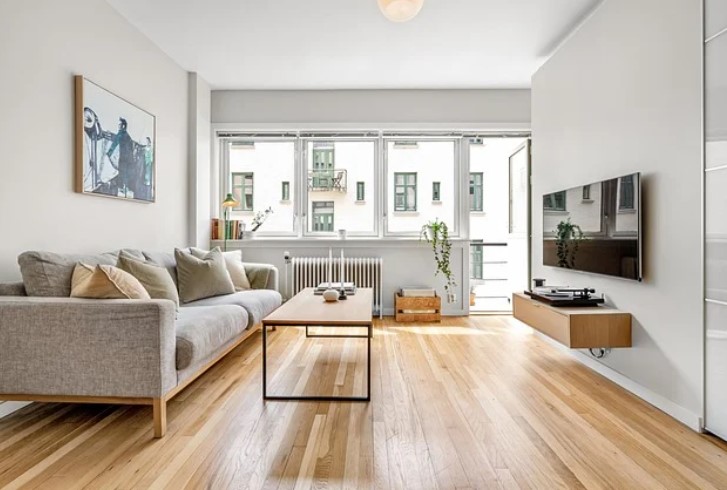Choosing the best colour paint inside the house is one of the most impactful ways to enhance your home’s interior design. The right paint colours can create a warm, inviting atmosphere, make small rooms appear larger, and influence the overall mood of a space. With so many options, selecting the perfect paint shade can feel overwhelming. This guide will help you navigate the best paint colours for different rooms, trends, and expert tips for a flawless interior transformation.
Why Paint Colour Matters in Interior Design
The colour of your walls plays a crucial role in setting the tone of your home. It affects the perceived space, light reflection, and even the emotional impact of a room. Here’s why choosing the right colour matters:
- Mood Influence – Soft blues and greens create a calming effect, while vibrant colours like red and orange add energy.
- Space Perception – Lighter colours make a room feel bigger, while darker hues add cosiness and an intimate feel.
- Aesthetic Appeal – A well-chosen colour enhances furniture, décor, and architectural details.
How to Choose the Best Interior Paint Colours
1. Consider the room’s Purpose
Each room serves a different function, and the paint colour should complement its use.
- Living Room: Neutral tones like beige and soft white create an inviting ambience.
- Kitchen: Warm tones like yellow, terracotta, or light blue enhance appetite and socialisation
- Bedroom: Cool colours like pastel blue, lavender, or sage green promote relaxation.
- Bathroom: Soft greens and blues mimic a spa-like atmosphere.
- Home Office: Shades like deep green or charcoal grey boost focus and productivity.
2. Test Paint Samples
Never rely on a paint swatch alone. Buy small paint samples and test them on your walls to see how they look under different lighting conditions throughout the day.
3. Understand Colour Undertones
Even neutral colours have undertones. Beige may have yellow or pink undertones, while grey can have blue or purple undertones. Understanding undertones helps avoid clashing with your décor.
4. Use the 60-30-10 Rule
A well-balanced colour palette follows this formula:
- 60% Dominant Colour – Walcolouror
- 30% Seconda Colour – Furniture and upholstery
- 10% AccColourolor – Décor items and accessories
Best Interior Paint Colours for Each Room
Living Room Paint Colours
- GreigeGreyay + Beige)A perfect balance of warmth and modernity.
- Soft White: Enhances natural light and gives an airy feel.
- Muted Blues: Creates a serene and welcoming atmosphere.
Bedroom Paint Colours
- CoolGreyy: A modern and calming colour choice.
- Pale Blue: Promotes relaxation and tranquillity.
- Blush Pink: A subtle, romantic shade.
Kitchen Paint Colours
- Classic White: Makes the kitchen feel clean and spacious.
- Warm Yellow: Adds a cheerful ambience.
- Earthy Green: Provides a natural, refreshing feel.
Bathroom Paint Colours
- Sky Blue: Evokes a spa-like environment.
- Mint Green: Fresh and soothing.
- Soft Taupe: Elegant and warm.
Home Office Paint Colours
- Navy Blue: Enhances concentration.
- Dark Green: Promotes a productive and sophisticated feel.
- WarGreyay: Neutral and professional.
Popular Interior Paint Trends in 2025
Earthy Neutrals
Warm tones like taupe, terracotta, and sand are gaining popularity for their cosy and timeless appeal.
Deep Jewel Tones
Emerald green, sapphire blue, and deep burgundy are trending for adding drama and sophistication.
Muted Pastels
Soft pinks, lavender, and sage green are used for a subtle, contemporary look.
Two-Tone Walls
Combining two complementary shades, such as navy and white or grey and blush, creates depth and interest.
Bold Accent Walls
A neutral room’s darker or vibrant accent wall adds character without overwhelming the space.
Tips for Painting Your Home Interior Like a Pro
- Choose the Right Finish: Flat and eggshell finishes work best for walls, while semi-gloss and satin are ideal for high-moisture areas like kitchens and bathrooms.
- Use High-Quality Paint: Invest in premium paints for better coverage, durability, and a smoother finish.
- Prepare the Walls: Clean and prime the surface before painting for a flawless application.
- Apply Multiple Coats: Two coats of paint usually provide the best colour payoff.
- Don’tt Forget the Ceiling: A light-colored ceiling makes the room feel more spacious.
Frequently Asked Questions (FAQS)
What is the most popular interior paint colour?
Neutral tones like white, beige, and soft grey are among the most popular for their versatility and timeless appeal.
How do I make a small room look bigger with paint?
Using light colours like white, beige, or pastel shades can make a small room appear more spacious. Adding mirrors and proper lighting also helps enhance the effect.
Should all rooms in a house be the same colour?
While a cohesive colour scheme is recommended, each room can have its own unique colour that complements the house’s overall design.
What are the best paint colours for a modern home?
Modern homes often feature neutral palettes like white, grey, and black, accented with deep blues, greens, or earth tones.
How often should I repaint the interior of my house?
On average, walls should be repainted every 5-7 years, depending on wear and tear. High-traffic areas may need repainting more frequently.
Final Thoughts
Selecting the best paint colour inside the house is an exciting way to personalise your space and create the desired ambience. Whether you prefer soft neutrals, bold accent walls, or calming pastels, the right choice will enhance your home’s beauty and comfort. Consider room function, lighting, and trends when selecting paint colours to achieve a stunning and timeless interior.

